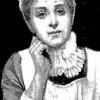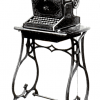
Arlene Young, “The Rise of the Victorian Working Lady: The New-Style Nurse and the Typewriter, 1840-1900”
The increasing demographic imbalance between men and women in Britain in the nineteenth century forced many women and girls from the middle classes to seek employment to maintain themselves because, in the words of one commentator, “there were not enough husbands to go round.” Working for pay, however, was considered déclassé and the employments that emerged as two of the most popular for middle-class women, nursing and typewriting, had to overcome cultural resistance.

Christopher Keep, “The Introduction of the Sholes & Glidden Type-Writer, 1874”
The introduction of Sholes & Glidden Type-Writer, the first commercially successful instrument for mechanical inscription, played a significant role in adapting alphabetic communications to the exigencies of capitalism as it came to increasingly depend on the transcription and management of printed matter. At a time when government agencies and businesses were seeking greater efficiencies in their clerical workforce, the imagined fit between typing and other kinds of feminine work (needle point and performing on a pianoforte), helped draw large numbers of women into the white-collar workforce. The article concludes by examining how the “irruption of the mechanical” into the act of self expression occasioned by the spread of typewriting was taken up as a theme in the literature of the late-nineteenth century, with particular attention to Bram Stoker’s Dracula (1897).
